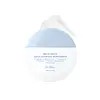What's inside
What's inside
 Key Ingredients
Key Ingredients

No key ingredients
 Benefits
Benefits

 Ingredients Side-by-side
Ingredients Side-by-side

Water
Skin ConditioningBambusa Vulgaris Water
Skin ConditioningIsononyl Isononanoate
EmollientPropanediol
SolventButyloctyl Salicylate
Skin ConditioningEthylhexyl Triazone
UV AbsorberPolymethylsilsesquioxane
Dibutyl Adipate
EmollientDiethylamino Hydroxybenzoyl Hexyl Benzoate
UV FilterNiacinamide
SmoothingDrometrizole Trisiloxane
UV AbsorberMethylene Bis-Benzotriazolyl Tetramethylbutylphenol
UV Filter1,2-Hexanediol
Skin ConditioningPentylene Glycol
Skin ConditioningPolyglyceryl-3 Methylglucose Distearate
EmulsifyingGlycereth-26
HumectantPanthenol
Skin ConditioningBehenyl Alcohol
EmollientTromethamine
BufferingDecyl Glucoside
CleansingCaprylyl Methicone
Skin ConditioningHydrogenated Castor Oil/Sebacic Acid Copolymer
EmollientCarbomer
Emulsion StabilisingAcrylates/C10-30 Alkyl Acrylate Crosspolymer
Emulsion StabilisingPolyglyceryl-6 Distearate
EmulsifyingPolyacrylate Crosspolymer-6
Emulsion StabilisingTrimethylsiloxysilicate
EmollientEthylhexylglycerin
Skin ConditioningCandelilla/Jojoba/Rice Bran Polyglyceryl-3 Esters
EmulsifyingSodium Stearoyl Glutamate
CleansingAdenosine
Skin ConditioningGlycerin
HumectantSodium Hyaluronate
HumectantXanthan Gum
EmulsifyingCeramide NP
Skin ConditioningTocopherol
AntioxidantButylene Glycol
HumectantCaulerpa Lentillifera Extract
Sodium Dna
Skin ConditioningWater, Bambusa Vulgaris Water, Isononyl Isononanoate, Propanediol, Butyloctyl Salicylate, Ethylhexyl Triazone, Polymethylsilsesquioxane, Dibutyl Adipate, Diethylamino Hydroxybenzoyl Hexyl Benzoate, Niacinamide, Drometrizole Trisiloxane, Methylene Bis-Benzotriazolyl Tetramethylbutylphenol, 1,2-Hexanediol, Pentylene Glycol, Polyglyceryl-3 Methylglucose Distearate, Glycereth-26, Panthenol, Behenyl Alcohol, Tromethamine, Decyl Glucoside, Caprylyl Methicone, Hydrogenated Castor Oil/Sebacic Acid Copolymer, Carbomer, Acrylates/C10-30 Alkyl Acrylate Crosspolymer, Polyglyceryl-6 Distearate, Polyacrylate Crosspolymer-6, Trimethylsiloxysilicate, Ethylhexylglycerin, Candelilla/Jojoba/Rice Bran Polyglyceryl-3 Esters, Sodium Stearoyl Glutamate, Adenosine, Glycerin, Sodium Hyaluronate, Xanthan Gum, Ceramide NP, Tocopherol, Butylene Glycol, Caulerpa Lentillifera Extract, Sodium Dna
 Reviews
Reviews

Ingredients Explained
These ingredients are found in both products.
Ingredients higher up in an ingredient list are typically present in a larger amount.
1,2-Hexanediol is a synthetic liquid and another multi-functional powerhouse.
It is a:
- Humectant, drawing moisture into the skin
- Emollient, helping to soften skin
- Solvent, dispersing and stabilizing formulas
- Preservative booster, enhancing the antimicrobial activity of other preservatives
Adenosine is in every living organism. It is one of four components in nucleic acids that helps store our DNA.
Adenosine has many benefits when used. These benefits include hydrating the skin, smoothing skin, and reducing wrinkles. Once applied, adenosine increases collagen production. It also helps with improving firmness and tissue repair.
Studies have found adenosine may also help with wound healing.
In skincare products, Adenosine is usually derived from yeast.
Learn more about AdenosineButylene Glycol (or BG) is used within cosmetic products for a few different reasons:
Overall, Butylene Glycol is a safe and well-rounded ingredient that works well with other ingredients.
Though this ingredient works well with most skin types, some people with sensitive skin may experience a reaction such as allergic rashes, closed comedones, or itchiness.
Learn more about Butylene GlycolCarbomer is a polymer of acrylic acid. Its main role is to create a gel consistency.
A high amount of carbomer can cause pilling or balling up of products. Don't worry, most products contain 1% or less of carbomer.
Glycerin is already naturally found in your skin. It helps moisturize and protect your skin.
A study from 2016 found glycerin to be more effective as a humectant than AHAs and hyaluronic acid.
As a humectant, it helps the skin stay hydrated by pulling moisture to your skin. The low molecular weight of glycerin allows it to pull moisture into the deeper layers of your skin.
Hydrated skin improves your skin barrier; Your skin barrier helps protect against irritants and bacteria.
Glycerin has also been found to have antimicrobial and antiviral properties. Due to these properties, glycerin is often used in wound and burn treatments.
In cosmetics, glycerin is usually derived from plants such as soybean or palm. However, it can also be sourced from animals, such as tallow or animal fat.
This ingredient is organic, colorless, odorless, and non-toxic.
Glycerin is the name for this ingredient in American English. British English uses Glycerol/Glycerine.
Learn more about GlycerinTromethamine helps balance the pH and improve the texture of a product. It is synthetically created.
As an emulsifier, Tromethamine prevents oil and water ingredients from separating. This helps stabilize the product and elongate a product's shelf life. Tromethamine also makes a product thicker.
Tromethamine helps balance the pH level of a product. Normal pH level of skin is slightly acidic (~4.75-5.5). The acidity of our skin is maintained by our glands and skin biome. Being slightly acidic allows our skin to create an "acid mantle". This acid mantle is a thin barrier that protects our skin from bacteria and contaminants.
Oral Tromethanmine is an anti-inflammatory drug but plays the role of masking, adding fragrance, and/or balancing pH in skincare.
1,3-Propanediol, 2-amino-2-(hydroxymethyl)-
Learn more about TromethamineWater. It's the most common cosmetic ingredient of all. You'll usually see it at the top of ingredient lists, meaning that it makes up the largest part of the product.
So why is it so popular? Water most often acts as a solvent - this means that it helps dissolve other ingredients into the formulation.
You'll also recognize water as that liquid we all need to stay alive. If you see this, drink a glass of water. Stay hydrated!
Learn more about Water